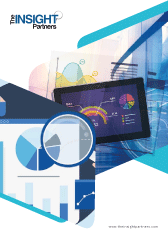$4450
$3560
The Connected Health Market size is expected to reach US$ 421.5 billion by 2031 from US$ 79.1 billion in 2024. The market is anticipated to register a CAGR of 27.2% during 2025–2031.
Connected Health Market Analysis
The connected health market is propelled by several key drivers, including the increasing prevalence of chronic diseases, rising emphasis on preventive healthcare, and advancements in medical technology. Expanding & virtual care, expansion of connected health through remote patient monitoring, and cross-industry collaborations creating significant growth opportunities. Additionally, wearable tech, and AI integration, forecasting exponential growth and transforming global healthcare delivery systems.
Connected Health Market Overview
Connected health refers to a comprehensive model of healthcare delivery that uses digital technologies to provide accessible, efficient, and personalized medical care. It encompasses a wide range of tools and platforms such as telemedicine, (RPM), mobile health apps, wearable devices, and electronic health records (EHRs). These technologies enable continuous interaction between patients and healthcare providers, improving patient outcomes and streamlining healthcare operations. Key benefits include enhanced patient engagement, reduced hospital readmissions, improved chronic disease management, and cost savings. Connected health finds applications in chronic disease monitoring, elderly care, fitness and wellness, mental health, and post-acute care. The major types include telehealth services, mHealth applications, RPM systems, and digital health platforms, each contributing to a seamless and proactive approach to healthcare.
Customize Research To Suit Your Requirement
We can optimize and tailor the analysis and scope which is unmet through our standard offerings. This flexibility will help you gain the exact information needed for your business planning and decision making.
Connected Health Market: Strategic Insights

Market Size Value in US$ 62.61 billion in 2022 Market Size Value by US$ 453.56 billion by 2030 Growth rate CAGR of 28.1% from 2022 to 2030 Forecast Period 2022-2030 Base Year 2022

Naveen
Have a question?
Naveen will walk you through a 15-minute call to present the report’s content and answer all queries if you have any.
 Speak to Analyst
Connected Health Market Drivers and Opportunities
Speak to Analyst
Connected Health Market Drivers and Opportunities
Customize Research To Suit Your Requirement
We can optimize and tailor the analysis and scope which is unmet through our standard offerings. This flexibility will help you gain the exact information needed for your business planning and decision making.
Connected Health Market: Strategic Insights

| Market Size Value in | US$ 62.61 billion in 2022 |
| Market Size Value by | US$ 453.56 billion by 2030 |
| Growth rate | CAGR of 28.1% from 2022 to 2030 |
| Forecast Period | 2022-2030 |
| Base Year | 2022 |

Naveen
Have a question?
Naveen will walk you through a 15-minute call to present the report’s content and answer all queries if you have any.
 Speak to Analyst
Speak to Analyst
Market Drivers:
Increasing Prevalence of Chronic Diseases:
The increasing prevalence of chronic diseases stands as a pivotal driver for the growth of the connected health market. Chronic conditions such as diabetes, cardiovascular diseases, and respiratory disorders require continuous monitoring and management to prevent complications and hospitalizations. Connected Health solutions, which integrate digital tools, remote monitoring devices, and telehealth services, offer a seamless approach to managing these long-term illnesses by enabling real-time tracking and personalized care outside traditional clinical settings. . In 2023, the Ministry of Health and Family Welfare launched an ambitious initiative aiming to place 75 million individuals with hypertension or diabetes on standard care by 2025. This initiative underscores the government's commitment to integrating digital health solutions into the management of chronic diseases, facilitating continuous monitoring and timely interventions. As chronic diseases become more widespread globally, the demand for connected health solutions will continue to surge.Rising Emphasis on Preventive Healthcare:
A key force propelling the growth of the connected health market is the rising global emphasis on preventive healthcare. As healthcare systems worldwide shift from reactive to proactive models, the integration of connected technologies has become central in identifying risk factors early, managing chronic conditions, and promoting healthier lifestyles. Wearable devices, remote monitoring tools, mobile health apps, and AI-powered platforms are empowering individuals to track their health in real-time, fostering a culture of prevention over treatment. In May 2025, the Centers for Medicare & Medicaid Services (CMS) Innovation Center revealed its 2025 strategic direction, centered on evidence-based prevention, putting preventive care at the heart of future models. This includes tools to unlock data access, empower individuals via mobile apps, and integrate preventive services into care delivery. As the global population ages and chronic diseases become more prevalent, connected health technologies that support early intervention and lifestyle management will remain crucial.
Market Opportunities:
Expanding Telemedicine & Virtual Care:
The connected health market is undergoing a significant transformation, driven by the integration of telemedicine and virtual care into mainstream healthcare delivery. These digital innovations offer more than just convenience; they are reshaping how care is accessed, delivered, and managed. As healthcare systems worldwide grapple with rising demand, limited resources, and a growing emphasis on personalized care, telemedicine and virtual platforms provide a strategic pathway to scale healthcare services efficiently while maintaining quality outcomes. . Under the National Health Scheme’s Sanjeevani portal, Telangana’s government expanded telemedicine services dramatically. From 2022–23 to 2023–24, user numbers surged from 5.3 million to 7.8 million consultations; by March?2025, projections reached 8.7 million. Services span general and specialized care, especially benefitting remote and tribal populations via sub?centres, PHCs, and urban PHCs. As healthcare ecosystems evolve, telemedicine and virtual care are not just tools—they are enablers of a connected, responsive, and inclusive health infrastructure, setting the foundation for sustainable growth in the connected health market.
Connected Health Market Report Segmentation Analysis
The connected health market is categorized into distinct segments to provide a comprehensive understanding of its structure, growth prospects, and emerging trends. Below is the standard segmentation approach used in most industry reports:
By Product Type:
M-Health Services:
M-Health (Mobile Health) services leverage mobile technology to deliver healthcare solutions, improve patient engagement, and streamline clinical processes. These services include remote patient monitoring, telemedicine consultations, health information dissemination, mobile diagnostics, and medication reminders. This segment held the largest connected health market share in 2024.M-Health Devices:
M-Health devices are portable, wearable, or mobile-enabled tools designed to collect, monitor, and transmit health data using wireless technology. These include fitness trackers, smartwatches with health sensors, portable ECG monitors, glucose meters, pulse oximeters, and Bluetooth-enabled medical devices. Integrated with mobile apps or cloud platforms, these devices enable real-time health tracking and seamless data sharing with healthcare professionals.
By Application:
Monitoring Applications:
Monitoring applications play a pivotal role in the connected health market, offering real-time insights into patients' health conditions. These applications include remote patient monitoring (RPM), chronic disease management tools, and wearable technologies that track vital signs such as heart rate, blood pressure, glucose levels, and more. By leveraging IoT devices, AI algorithms, and cloud-based platforms, healthcare providers can continuously monitor patients outside traditional clinical settings. This segment held the largest connected health market share in 2024.
Education and Awareness:
The education and awareness segment within the connected health market focuses on empowering individuals with knowledge to make informed health decisions. These applications offer users access to accurate, personalized health information through mobile apps, web portals, and interactive platforms.Wellness and Prevention:
The wellness and prevention segment is a rapidly expanding area in the connected health market, aiming to encourage healthier lifestyles and reduce the onset of chronic diseases. This segment includes fitness trackers, dietary apps, mental wellness platforms, sleep monitors, and preventive screening tools.Healthcare Management:
Healthcare management applications are essential tools in the connected health ecosystem, facilitating seamless coordination of care, clinical workflow optimization, and administrative efficiency. These applications support electronic health records (EHRs), patient scheduling, billing, prescription management, and telemedicine consultations.Others:
The others segment in the connected health market comprises a diverse array of emerging and niche applications that do not fall directly under the primary categories. These may include areas such as digital therapeutics, clinical research platforms, medical training simulations, and pharmaceutical compliance tools.
By End User:
- Hospitals and Clinics
- Home Monitoring
- Others
By Geography:
- North America
- Europe
- Asia Pacific
- South & Central America
- Middle East & Africa
The connected health market in Asia Pacific is expected to witness the fastest growth. Rising healthcare demand, mobile adoption, government initiatives, chronic disease burden, and tech innovation drive rapid connected health growth in Asia-Pacific.
Connected Health Market Report ScopeConnected Health Market Share Analysis by Geography
Asia Pacific is expected to grow the fastest in the next few years. Emerging markets in South & Central America, the Middle East & Africa also have many untapped opportunities for connected health providers to expand.
The connected health market grows differently in each region owing to to digital adoption, aging populations, chronic diseases, telehealth demand, and supportive healthcare policies. Below is a summary of market share and trends by region:
1. North America
Market Share:
Holds a significant portion of the global marketKey Drivers:
- Advanced healthcare infrastructure
- High adoption of telehealth and wearable tech
- Strong government and insurance support for digital health.
Trends:
Shift toward value-based care and integrated remote monitoring systems.
2. Europe
Market Share:
Substantial share owing to early, stringent EU regulationsKey Drivers:
- Government-funded digital health initiatives
- Aging population and chronic disease prevalence
- Emphasis on data interoperability and patient privacy.
Trends:
Expansion of cross-border telemedicine services and digital health collaborations.
3. Asia Pacific
Market Share:
Fastest-growing region with dominant market shareKey Drivers:
- Rising mobile and internet penetration
- Growing healthcare demand in populous nations (China, India)
- Government investments in digital healthcare infrastructure.
Trends:
Surge in health tech startups and AI-driven healthcare platforms.
4. Middle East and Africa
Market Share:
Although small, it is growing quicklyKey Drivers:
- Rising investment in smart healthcare infrastructure
- Urbanization and increasing digital literacy
- Healthcare access initiatives in underserved areas.
Trends:
Adoption of mobile health solutions to reach remote populations.
5. South & Central America
Market Share:
Growing Market with steady progressKey Drivers:
- Expanding telehealth services post-COVID
- Government support for rural healthcare access
- Increasing smartphone and wearable usage.
Trends:
Growth in mobile-first health platforms for chronic care and wellness management.
Connected Health Market Players Density: Understanding Its Impact on Business Dynamics
High Market Density and Competition
Competition is intense due to the presence of major global players such as Koninklijke Philips, Apple Inc., OMRON Corp., International Business Machines Corp., and Abbott Laboratories. Additionally, regional and specialized providers such as Medtronic Plc (Europe), GE HealthCare Technologies Inc (US), Fitbit LLC (US), Boston Scientific Corp (US), Samsung Electronics Co Ltd (South Korea) further diversify the competitive landscape.
This high level of competition urges companies to stand out by offering:
- Personalized health solutions using AI and big data
- Interoperable platforms that seamlessly integrate with existing healthcare systems
- Enhanced data security and privacy compliance (e.g., HIPAA, GDPR)
- Innovative user experiences through intuitive mobile apps and wearables
- End-to-end care ecosystems, from remote monitoring to virtual consultations.
Opportunities and Strategic Moves
- AI & Data Analytics Integration: Leveraging AI for predictive health insights and personalized care plans.
- Chronic Disease Management: Rising prevalence of diabetes, heart disease, and respiratory conditions requiring continuous monitoring.
Major Companies operating in the Connected Health Market are:
- Koninklijke Philips (Europe)
- Apple Inc. (US)
- OMRON Corp. (Japan)
- International Business Machines Corp.(US)
- Abbott Laboratories (US)
- Medtronic Plc (Europe)
- GE HealthCare Technologies Inc (US)
- Fitbit LLC (US)
- Boston Scientific Corp (US)
- Samsung Electronics Co Ltd (South Korea)
Disclaimer: The companies listed above are not ranked in any particular order.
Other companies analysed during the course of research:
- Babylon Health
- Amwell
- Cerner Corporation
- Allscripts
- Proteus Digital Health
- Withings
- ResMed
- Garmin Healthcare
- Livongo Health (now part of Teladoc)
- Qualcomm Life
- iRhythm Technologies
- BioTelemetry (now part of Philips)
- Health Catalyst
- Qualcomm Technologies
- Honeywell Life Care Solutions
- Cerbo Health
- DocPlanner
- Huma (formerly Medopad)
- Kaiser Permanente
- ResMed
- Garmin Healthcare
- Livongo
Connected Health Market News and Recent Developments
Philips has announced an expanded partnership with Medtronic, July 2025:
Philips has announced an expanded partnership with Medtronic to advance patient monitoring technologies. This multi-year agreement, building on a collaboration started in 1992, will see Philips' patient monitoring systems incorporate Medtronic's Nellcor pulse oximetry, BIS brain monitoring, and Microstream capnography. The goal is to provide a comprehensive, validated, and cybersecure monitoring solution that simplifies procurement and ensures high quality for clinicians, enabling them to focus more on patient care.OMRON Healthcare partnered with Tricog Health, April2025:
OMRON Healthcare, a market leader in home health monitoring solutions, has announced the next phase of its strategic partnership with Tricog Health, a prominent Medtech company specializing in cardiovascular care. Building on their 2023 collaboration to enter the remote heart monitoring and management segment, the two companies are now launching “KeeboHealth” an AI-driven, connected cardiac care platform. This solution is designed to enhance heart failure management by enabling continuous remote monitoring and delivering personalized, data-driven care. The initiative reflects both organizations’ commitment to advancing digital healthcare and improving patient outcomes through innovative, technology-enabled solutions.
Connected Health Market Report Coverage and Deliverables
The "Connected Health Market Size and Forecast (2021–2031)" report provides a detailed analysis of the market covering below areas:
- Connected health market size and forecast at global, regional, and country levels for all the key market segments covered under the scope
- Connected health market trends, as well as market dynamics such as drivers, restraints, and key opportunities
- Detailed PEST and SWOT analysis
- Connected health market analysis covering key market trends, global and regional framework, major players, regulations, and recent market developments
- Industry landscape and competition analysis covering market concentration, heat map analysis, prominent players, and recent developments for the connected health market
- Detailed company profiles

Report Coverage
Revenue forecast, Company Analysis, Industry landscape, Growth factors, and Trends

Segment Covered
Type, Application, and End User

Regional Scope
North America, Europe, Asia Pacific, Middle East & Africa, South & Central America

Country Scope
This text is related
to country scope.
Frequently Asked Questions
The Monitoring Applications segment is experiencing significant growth due to it plays a pivotal role in the connected health market, offering real-time insights into patients' health conditions. These applications include remote patient monitoring (RPM), chronic disease management tools, and wearable technologies that track vital signs such as heart rate, blood pressure, glucose levels, and more. By leveraging IoT devices, AI algorithms, and cloud-based platforms, healthcare providers can continuously monitor patients outside traditional clinical settings.
Top trends include:1. Integration with AI and Machine Learning2. Expansion of Wearables & IoT Devices3. Interoperability & Integrated Health Ecosystems4. Rise of Remote Patient Monitoring5. Value-Based & Preventive Care Models
While Asia-Pacific and North America currently dominate, Europe, Middle East & Africa, and parts of the South & Central America are expected to witness rapid growth owing to digital adoption, aging populations, chronic diseases, telehealth demand, and supportive healthcare policies.
As of 2024, the global connected health market is valued at approximately USD 79.10 billion. It is projected to reach USD 421.5 billion by 2031, growing at a compound annual growth rate (CAGR) of 27.2% during the forecast period from 2025 to 2031.
The market is primarily driven by:1. Increasing Prevalence of Chronic Diseases: The increasing prevalence of chronic diseases stands as a pivotal driver for the growth of the connected health market. Chronic conditions such as diabetes, cardiovascular diseases, and respiratory disorders require continuous monitoring and management to prevent complications and hospitalizations. Connected Health solutions, which integrate digital tools, remote monitoring devices, and telehealth services, offer a seamless approach to managing these long-term illnesses by enabling real-time tracking and personalized care outside traditional clinical settings.2. Rising Emphasis on Preventive Healthcare: A key force propelling the growth of the connected health market is the rising global emphasis on preventive healthcare. As healthcare systems worldwide shift from reactive to proactive models, the integration of connected technologies has become central in identifying risk factors early, managing chronic conditions, and promoting healthier lifestyles.
AI and ML are revolutionizing connected health by:1. Predictive Analytics for Early Diagnosis: AI and ML algorithms analyze patient data from EHRs, wearables, and medical devices to detect patterns and predict potential health issues before symptoms appear. This enables proactive care, reduces hospitalizations, and improves outcomes—especially in chronic diseases like heart failure and diabetes.2. Personalized and Precision Medicine: Machine learning models use individual patient data (including genetics, lifestyle, and real-time vitals) to deliver personalized treatment plans. This improves treatment effectiveness, reduces adverse drug reactions, and supports more targeted interventions.
Major players include Koninklijke Philips NV, Apple Inc., OMRON Corp., International Business Machines Corp., Abbott Laboratories, and among others.
Challenges include:Data Privacy & Security Risks: Handling vast amounts of sensitive patient data increases vulnerability to breaches and cyberattacks. Ensuring compliance with HIPAA, GDPR, and other regional regulations is complex and costly.
The List of Companies - Connected Health Market
- Koninklijke Philips (Europe)
- Apple Inc. (US)
- OMRON Corp. (Japan)
- International Business Machines Corp.(US)
- Abbott Laboratories (US)
- Medtronic Plc (Europe)
- GE HealthCare Technologies Inc (US)
- Fitbit LLC (US)
- Boston Scientific Corp (US)
- Samsung Electronics Co Ltd (South Korea)
The Insight Partners performs research in 4 major stages: Data Collection & Secondary Research, Primary Research, Data Analysis and Data Triangulation & Final Review.
- Data Collection and Secondary Research:
As a market research and consulting firm operating from a decade, we have published many reports and advised several clients across the globe. First step for any study will start with an assessment of currently available data and insights from existing reports. Further, historical and current market information is collected from Investor Presentations, Annual Reports, SEC Filings, etc., and other information related to company’s performance and market positioning are gathered from Paid Databases (Factiva, Hoovers, and Reuters) and various other publications available in public domain.
Several associations trade associates, technical forums, institutes, societies and organizations are accessed to gain technical as well as market related insights through their publications such as research papers, blogs and press releases related to the studies are referred to get cues about the market. Further, white papers, journals, magazines, and other news articles published in the last 3 years are scrutinized and analyzed to understand the current market trends.
- Primary Research:
The primarily interview analysis comprise of data obtained from industry participants interview and answers to survey questions gathered by in-house primary team.
For primary research, interviews are conducted with industry experts/CEOs/Marketing Managers/Sales Managers/VPs/Subject Matter Experts from both demand and supply side to get a 360-degree view of the market. The primary team conducts several interviews based on the complexity of the markets to understand the various market trends and dynamics which makes research more credible and precise.
A typical research interview fulfils the following functions:
- Provides first-hand information on the market size, market trends, growth trends, competitive landscape, and outlook
- Validates and strengthens in-house secondary research findings
- Develops the analysis team’s expertise and market understanding
Primary research involves email interactions and telephone interviews for each market, category, segment, and sub-segment across geographies. The participants who typically take part in such a process include, but are not limited to:
- Industry participants: VPs, business development managers, market intelligence managers and national sales managers
- Outside experts: Valuation experts, research analysts and key opinion leaders specializing in the electronics and semiconductor industry.
Below is the breakup of our primary respondents by company, designation, and region:

Once we receive the confirmation from primary research sources or primary respondents, we finalize the base year market estimation and forecast the data as per the macroeconomic and microeconomic factors assessed during data collection.
- Data Analysis:
Once data is validated through both secondary as well as primary respondents, we finalize the market estimations by hypothesis formulation and factor analysis at regional and country level.
- 3.1 Macro-Economic Factor Analysis:
We analyse macroeconomic indicators such the gross domestic product (GDP), increase in the demand for goods and services across industries, technological advancement, regional economic growth, governmental policies, the influence of COVID-19, PEST analysis, and other aspects. This analysis aids in setting benchmarks for various nations/regions and approximating market splits. Additionally, the general trend of the aforementioned components aid in determining the market's development possibilities.
- 3.2 Country Level Data:
Various factors that are especially aligned to the country are taken into account to determine the market size for a certain area and country, including the presence of vendors, such as headquarters and offices, the country's GDP, demand patterns, and industry growth. To comprehend the market dynamics for the nation, a number of growth variables, inhibitors, application areas, and current market trends are researched. The aforementioned elements aid in determining the country's overall market's growth potential.
- 3.3 Company Profile:
The “Table of Contents” is formulated by listing and analyzing more than 25 - 30 companies operating in the market ecosystem across geographies. However, we profile only 10 companies as a standard practice in our syndicate reports. These 10 companies comprise leading, emerging, and regional players. Nonetheless, our analysis is not restricted to the 10 listed companies, we also analyze other companies present in the market to develop a holistic view and understand the prevailing trends. The “Company Profiles” section in the report covers key facts, business description, products & services, financial information, SWOT analysis, and key developments. The financial information presented is extracted from the annual reports and official documents of the publicly listed companies. Upon collecting the information for the sections of respective companies, we verify them via various primary sources and then compile the data in respective company profiles. The company level information helps us in deriving the base number as well as in forecasting the market size.
- 3.4 Developing Base Number:
Aggregation of sales statistics (2020-2022) and macro-economic factor, and other secondary and primary research insights are utilized to arrive at base number and related market shares for 2022. The data gaps are identified in this step and relevant market data is analyzed, collected from paid primary interviews or databases. On finalizing the base year market size, forecasts are developed on the basis of macro-economic, industry and market growth factors and company level analysis.
- Data Triangulation and Final Review:
The market findings and base year market size calculations are validated from supply as well as demand side. Demand side validations are based on macro-economic factor analysis and benchmarks for respective regions and countries. In case of supply side validations, revenues of major companies are estimated (in case not available) based on industry benchmark, approximate number of employees, product portfolio, and primary interviews revenues are gathered. Further revenue from target product/service segment is assessed to avoid overshooting of market statistics. In case of heavy deviations between supply and demand side values, all thes steps are repeated to achieve synchronization.
We follow an iterative model, wherein we share our research findings with Subject Matter Experts (SME’s) and Key Opinion Leaders (KOLs) until consensus view of the market is not formulated – this model negates any drastic deviation in the opinions of experts. Only validated and universally acceptable research findings are quoted in our reports.
We have important check points that we use to validate our research findings – which we call – data triangulation, where we validate the information, we generate from secondary sources with primary interviews and then we re-validate with our internal data bases and Subject matter experts. This comprehensive model enables us to deliver high quality, reliable data in shortest possible time.
Trends and growth analysis reports related to Connected Health Market

Aug 2025
Flight Planning Software Market
Size and Forecast (2021 - 2031), Global and Regional Share, Trend, and Growth Opportunity Analysis Report Coverage: By Component (Software and Services), Deployment (Cloud and On-Premise), Application (Logistics and Cargo, Airport, Private Airlines, Commercial Airlines, Flight School and Training Center, and Military and Defense), and Geography

Aug 2025
Deepfake AI Detection Market
Size and Forecast (2021 - 2031), Global and Regional Share, Trend, and Growth Opportunity Analysis Report Coverage: By Component (Software and Services), Deployment (Cloud and On-Premises), Enterprise Size (Large Enterprises and SMEs), Industry Vertical (Media and Entertainment, BFSI, Government and Politics, Healthcare and Life Sciences, IT and Telecom, Retail and E-Commerce, and Others), and Geography

Aug 2025
Electronic Patient-Reported Outcomes (ePROS) Market
Size and Forecast (2021 - 2031), Global and Regional Share, Trend, and Growth Opportunity Analysis Report Coverage: By Delivery Mode (Cloud Based and On-Premises), Application (Oncology, Respiratory, and Others), End User [Contract Research Organizations (CROs), Pharmaceutical Companies, and Others], and Geography (North America, Europe, Asia Pacific, Middle East & Africa, and South & Central America)

Aug 2025
Travel and Expense Management Software Market
Size and Forecast (2021 - 2031), Global and Regional Share, Trend, and Growth Opportunity Analysis Report Coverage: By Deployment Mode (On-Premise and Cloud), Organization Size (Large Enterprises and Small and Medium Enterprises), Industry (BFSI, IT and Telecom, Manufacturing, Healthcare, Government and Defense, Retail, Transport and Logistics, and Others), and Geography

Aug 2025
Online Exam Proctoring Market
Size and Forecast (2021 - 2031), Global and Regional Share, Trend, and Growth Opportunity Analysis Report Coverage: By Type (Advanced Automated Proctoring, Recorded Proctoring, and Live Online Proctoring), Deployment (Cloud and On-Premises), End User (Educational Institutes, Enterprises, Government, and Online Learning Platforms), and Geography

Aug 2025
Data Center Colocation Market
Size and Forecast (2021 - 2031), Global and Regional Share, Trend, and Growth Opportunity Analysis Report Coverage: By Type (Retail Colocation, Wholesale Colocation, and Hybrid Cloud-based Colocation), Enterprise Size (Large Enterprises and SMEs), Industry Vertical (IT and Telecom, BFSI, Healthcare, Retail, and Others), and Region (North America, Europe, Asia Pacific, Middle East and Africa, and South and Central America)

Aug 2025
Personality Assessment Solution Market
Size and Forecast (2021 - 2031), Global and Regional Share, Trend, and Growth Opportunity Analysis Report Coverage: By Component (Solution and Services), Delivery Model (In-House and Outsourced), Offering (Synchronous and Asynchronous), End-user (Corporate or Enterprise [BFSI, Hospitality, IT and Telecom, Media and Entertainment, Healthcare and Pharmaceutical, and Others]), Academic or Education and Government), and Geography